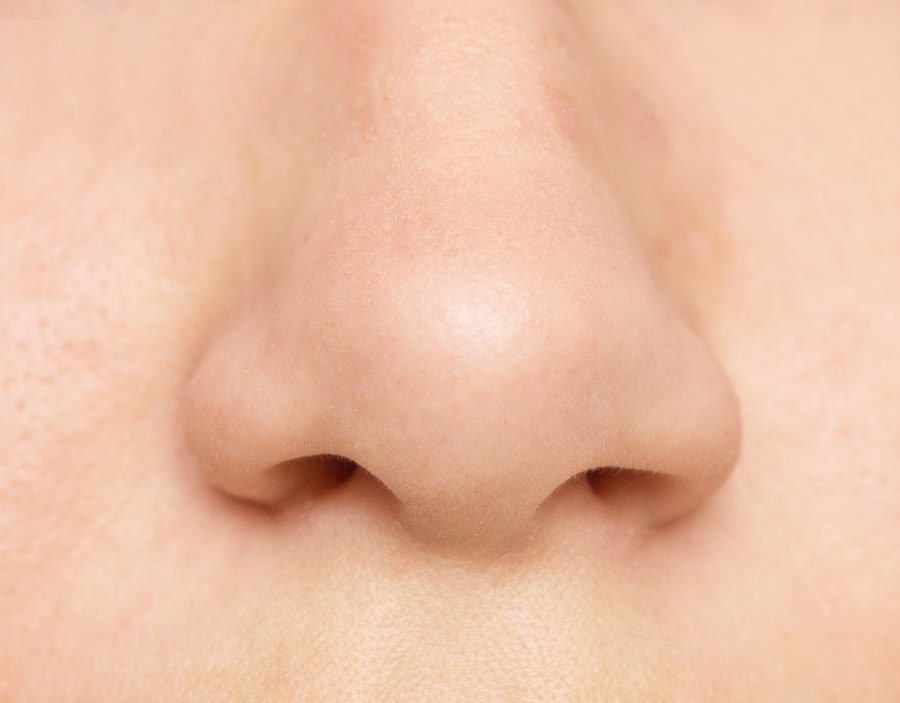Mohs Surgery, Reconstructive Plastic Surgery | The Office of Dr. Vincent Hung
3 Minute Read:
Although nasal reconstruction and nasal surgery sound like they are one and the same, they are vastly different procedures. Nasal reconstruction fills defects or holes created by skin cancer treatment, while rhinoplasty, or cosmetic nasal surgery, alters and enhances the physical appearance or function of the nose.

Despite being so different, at their core, both procedures enhance nasal aesthetics. Nasal reconstruction does so by moving skin and tissue. Rhinoplasty does so by altering cartilage and bone.
Nasal surgery, whether reconstructive or cosmetic, is one of the most complex and challenging forms of facial surgery. The nose is a multifaceted structure composed of cartilage, muscle, mucosa, tissue, and skin and, as if that alone did not make it difficult enough, it is the central aesthetic focus of the face.
Any defect or cosmetic insecurity is heightened when it deals with the nose, and nasal surgery can be the most rewarding type of facial enhancement.
How Does Rhinoplasty Differ from Nasal Reconstruction?
Rhinoplasty involves the surgical reshaping and reconstruction of the bone and cartilage to improve nasal functionality and aesthetics. This procedure is performed to alter a nasal profile that may have large humps or bumps, structural irregularities of the nasal tip, flared nostrils, or is not in balance with the surrounding facial features.
Rhinoplasty is performed through an open or closed method; however, this only differentiates the locations of the incisions. Rhinoplasty, regardless of technique, is performed entirely on the inside of the nose. This surgery involves shaving down the cartilage to get rid of bumps or introducing cartilage or bone grafts to augment the size or shape.
Why Is Nasal Reconstruction Essential After Skin Cancer Treatment?
The nose is one of the most common locations for skin cancer on the face. While Mohs surgery is one of the best ways to ensure that the tumor will be entirely removed and will not return, it often leaves a hole or defect in the skin.
Reconstruction focuses on preserving the nasal lining, support, and coverage. This uses one of four reconstruction techniques. The chosen method will depend on the size of your defect as well as your nasal anatomy.
Direct Linear Closure
This reconstruction technique is the easiest and most common approach when repairing a defect after Mohs surgery. Here, the two sides of the wound are pulled together, and the skin is closed in a straight line. Since most skin cancers are removed in a circle with Mohs surgery, this technique often elongates the shape of the missing skin so that the surface will not pucker when it is pulled together.
Local Flaps
The local flap technique may be offered when the defect is small. This process covers the area of missing skin by stretching the surrounding skin to cover the hole. The local flap method is less invasive and requires less recovery than skin grafts because it does not take skin or tissue from a secondary region.
Full Thickness Skin Grafts
Whereas local flaps borrow tissue from the nose, skin grafts take tissue from elsewhere on the body. This technique is required when the defect is larger, and the skin on the nose cannot be stretched to cover the hole adequately. The skin used for this graft comes from various regions of the body, and that area will be determined during your consultation.
Paramedian Forehead Flap
This technique is often considered the gold standard for nasal reconstruction. The forehead offers a large amount of tissue that can be safely relocated to the nose. This technique is ideal when the nasal defect is too large even for a standard skin graft and can create some of the most natural-looking and inconspicuous reconstructive results.
If you are about to undergo Mohs surgery for skin cancer on the nose, it is time to consider your nasal reconstruction options. Contact Dr. Hung by calling his Pasadena office at (626) 432-5032, his Newport Beach office at (949) 574-8292, or by filling out his online contact form.
